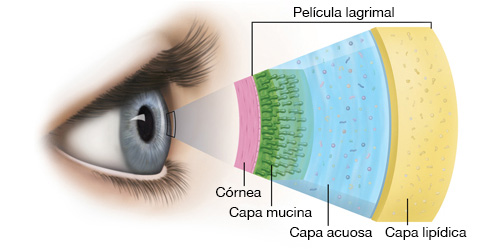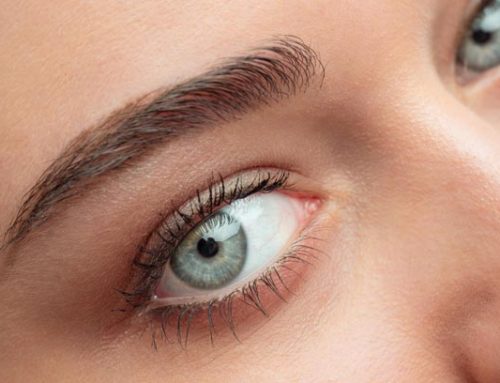Dry eye syndrome is a fairly common condition in today’s society. It is estimated to affect 20% of the general population, and in the case of those over 65, three out of four people.
Why does dry eye syndrome occur?
Every time we blink, a thin layer of tears forms on the surface of the eye. This is necessary to maintain good eye lubrication and hygiene. This tear layer is made up of water, lipids and mucus; most cases of dry eye syndrome are due to a lack of lipids, which results in the water evaporating too quickly.
When the balance is lost, there are not enough tears or they are not of good quality, then the patient begins to experience various discomforts. Since this pathology affects the cornea and the ocular surface, symptoms usually include: burning, stinging, itching, foreign body sensation, and even difficulty in seeing well.
Causes of dry eye syndrome
Specialists link the current number of people with dry eye syndrome to our lifestyle. Activities such as reading, watching television, working in front of a screen, or driving cause the eyes to fixate and reduce blinking.
The use of air conditioning or heating can create dry air environments that worsen symptoms. We should try to control this at home, in the office and when travelling in our car or on public transport.
Of course, environmental conditions such as pollution, tobacco smoke or wind can dry and irritate our eyes.
We also know that eye surgery, both presbyopia or cataract operations and more advanced refractive surgeries using Femtosecond LASIK or ReLEx SMILE can temporarily cause dry eye syndrome.
Treatment of dry eye syndrome
The treatment of dry eye syndrome depends on the level of dryness of the eye and other factors to be taken into account by the ophthalmologist. These may include: hormonal imbalances, suffering from some other illness or taking certain medications.
Mild dry eye syndrome is the most common. These are people who occasionally suffer symptoms due to exposure to polluted, dry environments or who spend many hours a day staring at their eyes.
Then there is moderate dry eye syndrome. The usual symptoms are intensified and experienced more frequently. Women in menopause or who have already gone through the menopause tend to suffer the most.
Finally, severe dry eye syndrome involves patients who suffer from symptoms on a daily or round-the-clock basis. This level of dryness is the least common and is usually associated with a disease such as Sjögren’s syndrome.
In summary, as we have seen, dry eye syndrome is a common problem and increases with age. There are different techniques for its diagnosis and treatment, which is why it is always recommended to see an ophthalmologist to determine the degree of dryness and consequently apply the appropriate treatment.
If you suffer from dry eye syndrome or similar discomfort, do not hesitate or postpone it, you can now contact your nearest Vistaláser ophthalmology clinic to be attended by our specialists in ophthalmology, we are in Malaga, Marbella, Fuengirola and Granada.


Leave A Comment